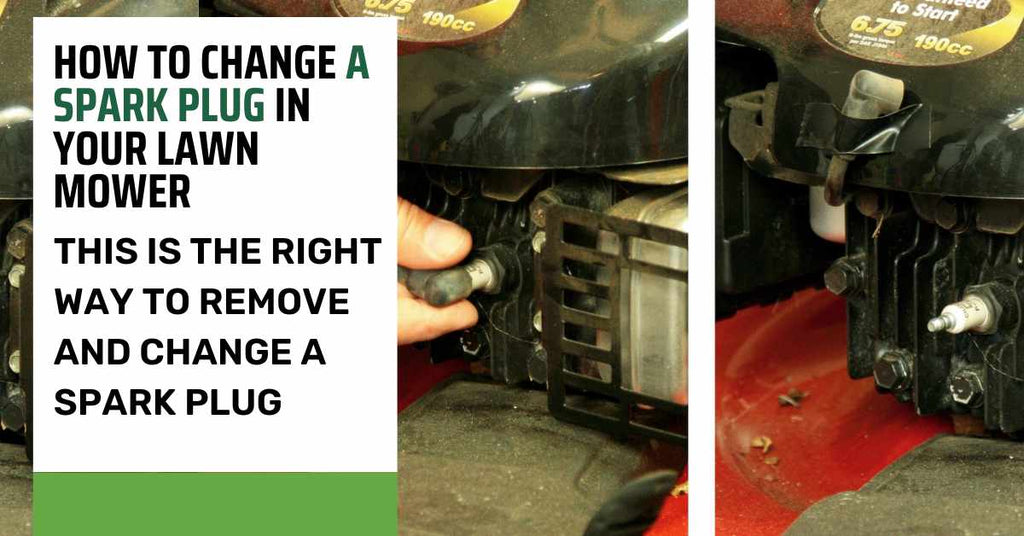

Welcome to the ultimate guide on changing your lawn mower's spark plug—where simplicity meets precision for a smoother mowing journey. If you've ever wondered about the fuss around this tiny part, get ready for an eye-opener. We're breaking it down step by step, no jargon involved.
Why Spark Plugs Matter? First off, what's the big deal with spark plugs? Well, they actually make sure your mower starts with ease. A good spark plug equals a happy, efficient mower. An old or neglected one? That's a recipe for trouble—hard starts and less fuel efficiency.
1. Gather Necessary Tools and Materials
- A socket wrench
- A spark plug socket
- A gap tool for precise adjustments
Importance of Safety Gear:
- Before diving into the replacement process, ensure you have safety gloves and goggles to protect yourself from any potential hazards.
2. Exact Steps
1.Identify the Spark Plug Location
- For push mowers, you'll typically find the spark plug on the top or side of the engine.
- Riding mowers often have the spark plug located near the front or beneath the seat. Refer to your mower's manual for specific guidance.
- Use a socket extension for plugs in deep-set locations.
- If needed, consider removing other components for easier access.
2. Choosing the Right Spark Plug:
- There are various spark plug types, including copper, platinum, and iridium. Each type has its advantages, so choose based on your mower's specifications.
- Refer to your mower's manual to identify the recommended spark plug type.
- Cross-reference the existing spark plug with a compatible replacement.
3. Removal of the Old Spark Plug
- Use a socket wrench to loosen the old spark plug.
- Carefully unscrew the plug by hand.
- If the plug is stuck due to rust or corrosion, applying penetrating oil can help ease the removal process.
4. Inspecting the Old Spark Plug:
- Examine the old spark plug for carbon buildup, commonly known as fouling. This can impact performance.
- Inspect the electrode for signs of wear or damage, such as irregularities in shape or erosion.
5. Properly Gap the New Spark Plug
- The gap between the center and ground electrode is critical for optimal combustion and preventing misfires.
- Use a gap tool to measure the existing gap.
- Adjust the gap as needed according to your mower's specifications.
6. Installing the New Spark Plug
- Hand-tighten the new spark plug initially.
- Use a torque wrench for the final tightening to avoid damage to the threads.
- Be cautious not to over-tighten, as this can lead to threading issues. Ensure the plug is straight during installation.
7. Torque Specifications
- Refer to your mower's manual for specific torque values, as over-tightening or under-tightening can cause problems.
- Proper torque ensures a secure fit without damaging the spark plug or the engine.
8. Reassemble and Test
- Replace any protective covers or components that were removed during the process.
- Reconnect the spark plug wire securely.
- Start the mower and observe for smooth operation.
- Listen for any unusual sounds or vibrations, ensuring the new spark plug is functioning effectively.
3. Signs it's Time to Change the Spark Plug
Recognizing Performance Issues:
- As spark plugs age, they may lead to performance issues such as difficulty starting the mower or irregular engine idling. If you notice these signs, it's likely time for a spark plug replacement.
Impact on Engine Efficiency:
- A worn-out spark plug can adversely affect fuel efficiency. If you observe a decrease in miles per gallon or detect unusual fuel odors during operation, it's a clear indicator that your spark plug needs attention.
Wrapping up
The process of changing your lawn mower's spark plug is an investment in the sustained efficiency and durability of your equipment, including crucial components such as the engine and lawn mower tires. Through these detailed steps, careful consideration of spark plug types, and precise installation, you've demonstrated a proactive commitment to the optimal functioning of your mower.
Frequently Asked Questions (FAQs)
1. What are the signs that indicate changing the spark plug?
Look out for performance issues such as difficulty starting the mower or irregular engine idling. Additionally, if you observe a decrease in fuel efficiency or detect unusual fuel odors during operation, it's a clear indicator that your spark plug needs attention.
2. Can a worn-out spark plug affect my mower's fuel efficiency?
Yes, a worn-out spark plug can adversely affect fuel efficiency. If you notice a decrease in miles per gallon or detect unusual fuel odors during operation, it's time to address the spark plug.
3. What should I do if the spark plug is hard to reach in my mower?
For hard-to-reach plugs, use a socket extension or consider removing other components for easier access. Taking these steps ensures a smoother spark plug replacement process.
4. Is it necessary to wear safety gear when changing the spark plug?
Yes, safety is paramount. It's crucial to wear safety gloves and goggles to protect yourself from any potential hazards during the spark plug replacement process.
5. What if my mower still experiences issues after changing the spark plug?
If problems persist, consult your mower's manual for troubleshooting tips. If the issues persist, seek professional assistance for a thorough diagnostic and resolution.











